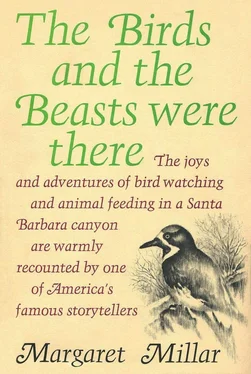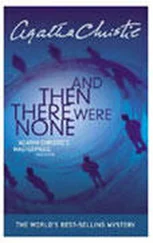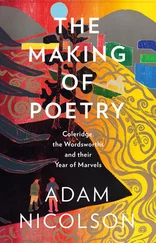Маргарет Миллар - The Birds and the Beasts Were There
Здесь есть возможность читать онлайн «Маргарет Миллар - The Birds and the Beasts Were There» весь текст электронной книги совершенно бесплатно (целиком полную версию без сокращений). В некоторых случаях можно слушать аудио, скачать через торрент в формате fb2 и присутствует краткое содержание. Город: New York, Год выпуска: 1967, Издательство: Random House, Жанр: Природа и животные, на английском языке. Описание произведения, (предисловие) а так же отзывы посетителей доступны на портале библиотеки ЛибКат.
- Название:The Birds and the Beasts Were There
- Автор:
- Издательство:Random House
- Жанр:
- Год:1967
- Город:New York
- ISBN:нет данных
- Рейтинг книги:4 / 5. Голосов: 1
-
Избранное:Добавить в избранное
- Отзывы:
-
Ваша оценка:
- 80
- 1
- 2
- 3
- 4
- 5
The Birds and the Beasts Were There: краткое содержание, описание и аннотация
Предлагаем к чтению аннотацию, описание, краткое содержание или предисловие (зависит от того, что написал сам автор книги «The Birds and the Beasts Were There»). Если вы не нашли необходимую информацию о книге — напишите в комментариях, мы постараемся отыскать её.
The Birds and the Beasts Were There — читать онлайн бесплатно полную книгу (весь текст) целиком
Ниже представлен текст книги, разбитый по страницам. Система сохранения места последней прочитанной страницы, позволяет с удобством читать онлайн бесплатно книгу «The Birds and the Beasts Were There», без необходимости каждый раз заново искать на чём Вы остановились. Поставьте закладку, и сможете в любой момент перейти на страницу, на которой закончили чтение.
Интервал:
Закладка:
17
Death and Life in the Forest
The winter weather began on November 9 with an inch of rain, followed after a short pause by another three-quarters of an inch. This made a modest total of less than two inches. Yet it was enough, falling as it did on denuded hills and mountains, to cause severe flooding. Streets near creek beds were buried under four or five feet of mud, and boulders that looked too big to move washed downstream like pebbles. Tons of water-driven debris crushed houses and bridges and retaining walls in its inexorable journey to the sea.
The beaches were strewn with wood, some burned or half burned, some barely scorched, some as big as telephone poles, some small as palm fronds, pine cones and eucalyptus pods. For driftwood collectors it was a paradise, for swimmers, surfers and skin divers, a nightmare. In addition to the serious hazards of floating lumber there was the fact that for several hundred yards beyond the surf the water was as muddy as the lower Colorado River. This brought up another problem: fish can’t see any better in muddy water than humans can in a blizzard or dust storm. When Ken swam his usual half mile on the first day of the flood, he had thirteen encounters with fish. Whether he bumped into them or they bumped into him is immaterial. Among our friends in the wet set, not a particularly scientific group, this became recognized as a way of measuring the ocean’s visibility — how many ichthyoid contacts Ken made on his daily swim.
Little good comes from a flood. Reservoirs silt up, and topsoil is washed away, carrying with it the seeds necessary to reestablish watershed vegetation.
Fire, on the other hand, is a natural condition of life in the chaparral regions of southern California, and an essential condition if vegetation is to remain young and vigorous. Without an occasional clearing out, the underbrush gets so thick and high that deer and other mammals can’t penetrate it and ground-dwelling birds have trouble foraging. When this happens the chaparral, normally rich in wildlife, becomes incapable of supporting its usual share. Fire occurring at twenty-to twenty-five-year intervals is a benefit, a cleaning-out of dead and diseased wood and ground cover. (Before any nature lover sets off into the hills with a pack of matches, it should be noted that more frequent fires result in the destruction of chaparral, and its conversion to a different and less interesting type of vegetation.)
Some forty or more plant species are grouped together under the name chaparral. Chaparro is the Spanish word for scrub oak; it also means a short, stocky person, and perhaps this gives, to someone who has never seen it, a better idea of chaparral. Chaparral is short, stocky, tough vegetation, capable of withstanding a yearly drought of six months or more.
Throughout the centuries a number of ways have evolved for chaparral plants to survive burning. Some, like green-bark ceanothus, sprout new leaves directly from the “dead” stumps. Some have woody crowns or burls at ground level, like toyon, or underground, like Eastwood manzanita, which is back to full size in a few years. Others have seeds with a hard coat that must be split open by fire, or else soft-coated seeds which need very high temperatures to trigger their internal chemistry. Among the plants with seeds requiring fire in order to germinate are some of the most dominant and important in the chaparral group of this region — chamise, big berry manzanita, laurel sumac, hoary leaf ceanothus, big pod ceanothus, sugar bush and lemonade bush. All but chamise are frequently used in cultivated gardens.
After the Coyote fire I hiked around the burned areas, observing as a birdwatcher, not a botanist. But I couldn’t help noticing that greenery started to reappear almost as soon as the earth had cooled. This applied especially to a certain vine, rather similar to a grapevine, which spread along the ground, as lush a green as ever graced a rain forest, and wrapped its tendrils around the blackened stumps of trees and shrubs. This was chilicothe, or wild cucumber. Its appearance had been neither delayed nor hastened by the fire, by the rain that followed, or by any external circumstances at all. When its cycle of growth was ready to begin again, it began: everything necessary for the complete process — leaves, flowers, fruit, seeds — was contained in a giant tuber buried underground.
An example of the chilicothe’s self-containment and independence of the outside world was accidentally provided by the local Botanic Garden. To show the public the size of the tubers, one weighing about fifty pounds was dug up and placed in the information center. At Christmas time it started sprouting, and within the next few weeks it went through its entire growth cycle while in a display case. Again the following year, still in the display case, it grew leaves and tendrils, it flowered and fruited and went to seed. It was only during this second cycle that the tuber became noticeably smaller and wrinkled as its water content decreased.
The emergence of the chilicothe was unimportant as far as food or shelter for wildlife was concerned. Yet it appeared to be a signal for the forest to come alive again. After a December rainfall of four and a half inches, oaks that looked ready for the woodpile and seemed to be still standing only because nobody had leaned against them, suddenly burst out with a cluster of leaves here, and a cluster there. No two trees refoliated in quite the same way. These native oaks are accustomed to fires and make strong comebacks, as do the sycamores. Not so the pines, which lack the regenerative powers of the other species. The pines that looked dead were dead. Although a few of them put out new needles at the top, these soon withered and dropped, and nothing further happened.
Such debility on the part of the tree itself must, in order to account for the species’ survival through centuries of periodic fires, be compensated for by the durability of the seed or the seed’s protective device. Some pines, such as Bishop, knobcone and to a certain extent Monterey, are equipped with closed cones which open and drop their seeds only when exposed to very high temperatures. There is a stand of Bishop pines near Santa Barbara which passers-by assume to be a state or county planting because the trees are all exactly the same size. The actual reason is that the seeds all germinated after the same fire.
During the Coyote fire the eucalyptus trees, especially the most widely planted variety, blue gum, burned very quickly. This was partly because of their natural oil content, which caused a great deal of black smoke, and partly because they were very dry. The deep underground water which carried many large trees through the summer drought was unavailable to the shallow-rooted eucalypts. But their comeback was also quick. In fact, the adaptation of these imports from Australia to a California fire provided one of the oddest sights of the spring and summer. Normally, eucalyptus leaves grow like other leaves, out of branches and twigs. When the branches and twigs, however, were consumed by fire, the leaves grew instead out of the trunk of the tree. They looked like telephone poles which had suddenly started to sprout leaves from top to bottom.
Certain trees took a long time to show signs of regeneration. These included the redwoods in the center of the Botanic Garden and the olive trees on the slopes of a canyon adjoining the Botanic Garden. This grove had been planted for the commercial milling of oil in the 1880s, about the time the first daily newspaper was established in Santa Barbara and the first free library and reading room was opened. The olive oil project was abandoned when cheap Mexican labor became scarce. One of the methods used to keep the workers on the job would be frowned on by present-day union officials: whenever the braceros gave evidence of wanting a siesta, a barrel of wine, carried on a donkey-drawn sled, passed between the rows of trees, and the braceros were bribed with booze on a considerably more generous scale than the British seamen with once-a-day grog.
Читать дальшеИнтервал:
Закладка:
Похожие книги на «The Birds and the Beasts Were There»
Представляем Вашему вниманию похожие книги на «The Birds and the Beasts Were There» списком для выбора. Мы отобрали схожую по названию и смыслу литературу в надежде предоставить читателям больше вариантов отыскать новые, интересные, ещё непрочитанные произведения.
Обсуждение, отзывы о книге «The Birds and the Beasts Were There» и просто собственные мнения читателей. Оставьте ваши комментарии, напишите, что Вы думаете о произведении, его смысле или главных героях. Укажите что конкретно понравилось, а что нет, и почему Вы так считаете.



![Маргарет Миллар - Rose's Last Summer [= The Lively Corpse]](/books/384369/margaret-millar-rose-s-last-summer-the-lively-c-thumb.webp)


![Маргарет Миллар - The Iron Gates [= Taste of Fears]](/books/433837/margaret-millar-the-iron-gates-taste-of-fears-thumb.webp)





